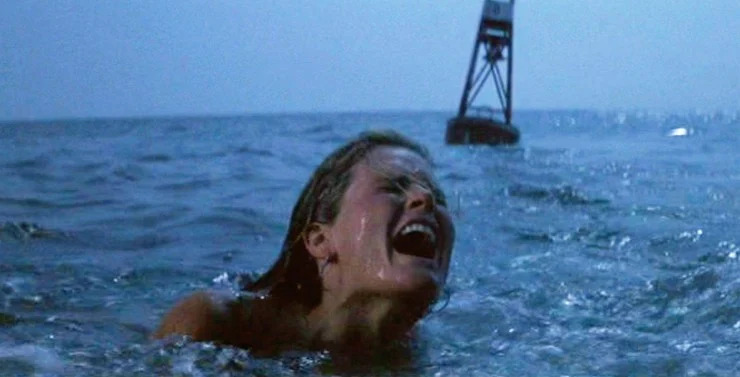
How To Start a Screenplay
Screenwriters are storytellers. The screenplay is the foundation of the film, and it is important to start the process with a strong beginning. This guide will how to start a screenplay and make the most of your storytelling skills.
What You Need Before Starting a Screenplay
Before learning how to start a screenplay, it is important to have a few things lined up.
How To Come Up With Ideas For a Script
One of the most difficult parts of writing a script is coming up with ideas. After all, a script is only as good as its premise.
Fortunately, there are a few techniques that can help to stimulate your creativity and come up with ideas for a great script. One approach is to start by asking yourself what kind of story you want to tell.
What genre are you interested in? What style? Once you have a general idea of the kind of story you want to tell, you can start brainstorming specific plot elements.
Another approach is to look for inspiration in real life. Pay attention to the news, read books, and watch movies.
As you consume stories, pay attention to the ones that really capture your interest. What is it about them that makes them so compelling?
By analyzing the stories that you love, you can start to develop your own unique voice as a writer. Coming up with ideas for a script may seem daunting at first, but by using these methods, you can develop a wealth of great ideas for your next project.
Why Developing Characters Is Important
If you want to know how to start a screenplay, you’ll need to know why developing characters is important. Once you have your idea, it’s time to start developing your characters. A compelling character is the heart of any good story. Without characters that audiences can connect with, a film will fall flat no matter how impressive its other elements may be.
That’s why it’s essential to spend time developing strong characters before starting to write a screenplay. Who are the protagonists and antagonists? What motivates them? What obstacles do they face?
By fleshing out a character’s backstory and personality, writers can ensure that their characters feel three-dimensional and real.
Additionally, well-developed characters will naturally drive the plot forward, giving the story a clear purpose and direction.
In short, starting a screenplay without fully developed characters is like painting a house without a foundation; it’s simply not going to hold up in the long run.
So if you want to write a great screenplay, make sure to take the time to create compelling and believable characters. It’ll be time well spent.
Why Outlining Is Important
Once you have your characters in place, you can start outlining the plot. This may seem like a tedious task, but it is essential in order to create a cohesive and well-structured script.
What happens in the beginning, middle, and end? What scenes are essential, and what can be cut? By outlining the plot, characters, and scenes beforehand, you can save yourself a lot of time and frustration later on.
By mapping out the story ahead of time, you can ensure that each scene flows smoothly into the next and that there are no loose ends.
Additionally, an outline can help you to spot potential problem areas and make necessary changes before you start writing the actual screenplay.
Taking the time to outline your story will pay off in the long run, so don’t skip this important step.
Writing Habits To Help With Starting Your Screenplay
In any creative field, developing strong writing habits is essential to success. This is especially true in screenwriting, where the process of writing a script can be daunting and overwhelming.
However, by developing a few key writing habits, you can set yourself up for success. It’s important to create a daily writing routine.
Dedicate a specific time each day to sit down and write, and stick to it as much as possible. Even if you only have a few minutes to write, that’s better than nothing.
It’s also important to nurture your creativity. Take time each day to read or watch something that inspires you, and allow yourself to daydream and brainstorm about new ideas.
Finally, don’t be afraid to revise and edit your work. The first draft of any script is rarely perfect, so be prepared to go through several rounds of revision before you’re happy with the final product.
What Should Be Written In The First Scene
The first scene of a screenplay is critical in setting up the story and engaging the audience. It should introduce the characters and their world, establish the tone, and give a glimpse of the conflict to come.
In short, the first scene should provide all the information necessary to understand what is at stake and why the audience should care.
Of course, all of this must be done in an expedient manner, as screenplays are notoriously short on time and attention span.
As such, great care must be taken in choosing what information to include and how best to communicate it.
With so much riding on such a small amount of text, it is no wonder that so many screenwriters find the first scene to be the most daunting part of the process.
10 Tips On How To Write The First Scene
One of the most important aspects of a successful screenplay is the first scene. This is your opportunity to grab the reader’s attention and set the tone for the rest of the script. Here are ten tips on how to write a first scene that will keep readers engaged:
- Start with action: Don’t waste time with filler or exposition. Get straight to the heart of the story.
- Set the stage: Use the first scene to establish the location and time period for the rest of the screenplay.
- Introduce the main character: The first scene is a great opportunity to introduce your protagonist and establish their personality and goals.
- Incorporate conflict: A little bit of conflict will help to hook readers and keep them invested in the story.
- Be concise: First scenes should be short and sweet – no more than two or three pages.
- Leave room for interpretation: First scenes should raise questions that will be answered later in the script.
- Establish theme: The first scene is a great place to start setting up the theme of your story.
- Use strong dialogue: Well-written dialogue can be a powerful tool in the first scene. Make sure each line furthers the plot or develops character.
- Create tension: A little bit of tension will go a long way in keeping readers engaged. Build it slowly throughout the scene so that it reaches a climax at the end.
- End with a bang: The best first scenes end on a strong note that will leave readers wanting more. Whether it’s a cliffhanger or simply an intriguing revelation, make sure your first scene ends with a bang.
Write a Treatment
Many novice screenwriters make the mistake of starting to write their screenplay without first developing a treatment.
A treatment is a document that outlines the key elements of the story, including the characters, plot, and setting. It is an essential tool for any screenwriter, as it helps to focus the story and ensure that all the necessary elements are included.
Without a treatment, it is easy to get lost in the writing process and end up with a meandering and unfocused script.
A treatment also makes it easier to develop a clear structure for the screenplay. By outlining the story in advance, you can avoid getting bogged down in the details and ensure that each scene advances the plot in a purposeful way.
In short, writing a treatment is an essential step in the screenwriting process, and one that should not be overlooked.
Examples Of Well Written Opening Scenes
Movies are a visual medium, and the opening scene is an important opportunity to set the tone and establish the world of the film. A well-written opening scene will grab the audience’s attention and give them a taste of what is to come. Here are three examples of well-written opening scenes in movies.
Jaws

The first example is from the movie “Jaws.” The opening scene shows a woman swimming alone at night, and the audience gets a sense of her vulnerability as she is hunted by an unseen predator. This scene is not only suspenseful, but it also establishes the key conflict of the movie: humans versus nature.
Pulp Fiction

The second example is from the movie “Pulp Fiction.” The opening scene features two hitmen discussing mundane topics while they wait for their target. This scene gradually builds tension as we realize that these men are about to commit a crime. But it also gives us a sense of their relationship with each other, which is one of the key themes of the movie.
The Silence of The Lambs

The third example is from the movie “The Silence of the Lambs.” The opening scene takes place in an asylum, where we meet Hannibal Lecter, a notoriously dangerous criminal. This scene establishes Lecter as an intelligent and charismatic character, even though we know he is dangerous. It also introduces us to Clarice Starling, the heroine of the story, who must track down Lecter in order to catch another killer.
These are just three examples of how to start a screenplay. Each one sets up the world of the film and introduces us to the key characters and conflict. A well-crafted opening scene can make all the difference in whether or not an audience enjoys a film.
Conclusion
Screenwriting can be a fun and rewarding experience, but it takes hard work and dedication. These tips should give you a good foundation on how to start a screenplay. Remember, always revise and polish your work until it’s as good as it can be. Are you ready to start writing?
Related:
- 3 Things Your Screenplay Must Have To Get Picked Up
- Do You Have To Live In LA To Be A Screenwriter
- Are You Looking For Screenplay Ideas